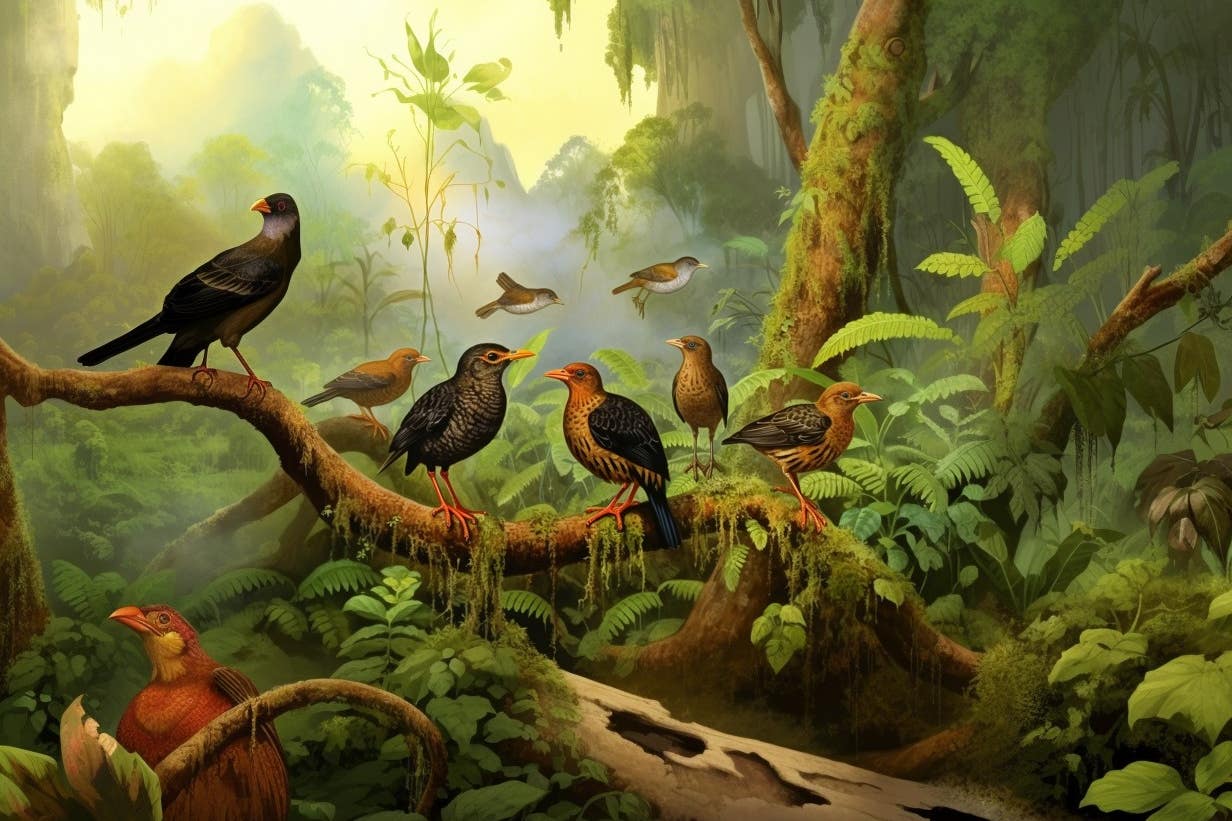Humans have wiped out twice as many bird species as previously thought – study
Researchers believe 1,430 bird species – almost 12% – have died out over modern human history.

Your support helps us to tell the story
From reproductive rights to climate change to Big Tech, The Independent is on the ground when the story is developing. Whether it's investigating the financials of Elon Musk's pro-Trump PAC or producing our latest documentary, 'The A Word', which shines a light on the American women fighting for reproductive rights, we know how important it is to parse out the facts from the messaging.
At such a critical moment in US history, we need reporters on the ground. Your donation allows us to keep sending journalists to speak to both sides of the story.
The Independent is trusted by Americans across the entire political spectrum. And unlike many other quality news outlets, we choose not to lock Americans out of our reporting and analysis with paywalls. We believe quality journalism should be available to everyone, paid for by those who can afford it.
Your support makes all the difference.Humans have wiped out around 1,400 bird species – twice as many as previously thought, a new study suggests.
Over time, the arrival of people in places like Hawaii, Tonga and the Azores led to far-reaching impacts including deforestation, overhunting and the introduction of invasive species.
As a result, many unknown species of birds were wiped out, the research by the UK Centre for Ecology and Hydrology (UKCEH) suggests.
Scientists say one in nine species has been lost – double the current estimate.
Our study demonstrates there has been a far higher human impact on avian diversity than previously recognised
They also suggest the findings reveal the largest vertebrate extinction event in history caused by people.
The demise of many birds since the 1500s has been recorded, but for the fate of species before this, science relies on fossils.
However, these records are limited because the lightweight bones of birds disintegrate over time, concealing the true extent of global extinctions, experts say.
Researchers now believe 1,430 bird species – almost 12% – have died out over modern human history, since the Late Pleistocene around 130,000 years ago.
It is thought the vast majority of them went extinct directly or indirectly due to human activity.
Lead author Dr Rob Cooke, an ecological modeller at UKCEH, said: “Our study demonstrates there has been a far higher human impact on avian diversity than previously recognised.
The world may not only have lost many fascinating birds but also their varied ecological roles
“Humans have rapidly devastated bird populations via habitat loss, overexploitation and the introduction of rats, pigs and dogs that raided nests of birds and competed with them for food.
“We show that many species became extinct before written records and left no trace, lost from history.”
Dr Spren Faurby of the University of Gothenburg, a co-author of the study, added: “These historic extinctions have major implications for the current biodiversity crisis.
“The world may not only have lost many fascinating birds but also their varied ecological roles, which are likely to have included key functions such as seed dispersal and pollination.
“This will have had cascading harmful effects on ecosystems so, in addition to bird extinctions, we will have lost a lot of plants and animals that depended on these species for survival.”
Data suggests some 640 bird species have been driven extinct since the Late Pleistocene period – 90% of these on islands inhabited by people.
These range from the iconic dodo of Mauritius to the great auk of the North Atlantic to the lesser-known Saint Helena giant hoopoe.
However, the researchers estimate the actual figure is more than double that – 1,430 lost species – leaving just under 11,000 today.
According to Dr Cooke, it is likely that only around 50 of these species would have died out naturally.
The scientists say their study has revealed the largest human-driven vertebrate extinction event in history, during the 14th century, estimating that 570 bird species were lost after people first arrived in the Eastern Pacific, including Hawaii and the Cook Islands.
They believe there was also a major extinction event in the ninth century BC, mainly driven by the arrival of people in the Western Pacific, including Fiji and the Mariana Islands, as well as the Canary Islands.
The findings, published in Nature Communications, are based on modelled estimates on known extinctions and the extent of relevant research effort in regions compared to New Zealand, which is the only country in the world where pre-human bird fauna is believed to be completely known.
The fewer studies in a region, the more incomplete the fossil record is expected to be, and the greater the number of estimated undiscovered extinctions.